Vice President, Chief Content Officer: June Kikuchi
Vice President, Kennel Club Books: Andrew DePrisco
Production Supervisor: Jessica Jaensch
Production Coordinator: Tracy Vogtman
Art Director: Cindy Kassebaum
I-5 Press: Jennifer Calvert, Amy Deputato,
Lindsay Hanks, Karen Julian, Roger Sipe, Jarelle S. Stein
Copyright 2010 by I-5 Press
Photographs 2010 Gina Cioli/I-5 Publishing, LLC
Additional photographs courtesy of/reproduced with permission of: Bonnie Jay13, 14, 36, 41, 43, 44, 53, 62; Carolyn A. McKeone39, 47, 48, 50, 59; Shutterstock Images51, 52, 60; Christopher Appoldt58
All rights reserved. No part of this book may be reproduced, stored in a retrieval system, or transmitted in any form or by any means, electronic, mechanical, photocopying, recording, or otherwise, without the prior written permission of I-5 Press, except for the inclusion of brief quotations in an acknowledged review.
The author would like to thank BirdTalk Editor Laura Doering.
Library of Congress Cataloging-in-Publication Data
Moustaki, Nikki, 1970
Boredom busters for birds : 40 fun and feather-friendly toys and activities / by Nikki Moustaki.
p. cm.
Includes bibliographical references.
ISBN 978-1-935484-19-6
eISBN 978-1-620080-59-7
1. Birds--Behavior. 2. Birds--Training. I. Title.
SF461.6.M678 2010
636.68--dc22
2010000138
I-5 Press
A Division of I-5 Publishing, LLC
3 Burroughs
Irvine, California 92618
Printed and bound in China
14 13 12 11 3 4 5 6 7 8 9 10
Table of Contents


Enriching Your Birds Life
O ne week your bird is as happy as a hound at an all-you-can-eat buffet, and the next hes biting, screaming, or pulling out his feathers. What happened? The change was so sudden, so unexpected, so unlike him. Has he lost his feathered mind? Maybe hes just bored.
Birds who are physically and mentally unchallenged begin to exhibit unpleasant characteristics and behaviors. They can become depressed, anxious, self-destructive, outwardly aggressive, unpredictable, loud (or conversely, brooding and quiet), and even ill. A bored, lonely bird may change from a lively and contented pal into something resembling an unruly teenager you wouldnt trust with your car keys. Its time for an enrichment intervention to turn Birdzilla back into a happy, friendly companion.

Lack of enrichment can cause boredom, stress, and anxiety, leading to behavioral problems such as constant screeching, aggression, or feather destruction (plucking, picking, or chewing). Adding enriching toys and activities to a birds life can solve many such issues and can help prevent a bird from becoming overweight or antisocial.
Enrichment for birds is anything that keeps birds active and engaged in their environment and that stimulates their natural behaviors and instincts. This book explores some simple ways to provide your bird with stimulating types of enrichment to keep him happy, healthy, and out of trouble.


Enrichment Types and Defining Factors
T here are many ways that you can enrich your birds life and make his daily routine more varied and interesting. Those ways fall into four categories, or types, of enrichment: solo, social, environmental, and variance. Which enrichment endeavors your bird will respond to depends on a variety of factors, including his species, his age, and his upbringing and general lifestyle. Finding the toys and activities that will capture your birds attention will also be a matter of trial and error, as no two birds are alike, even those of the same species; what one conure may respond to, for example, another may not.
The Four Types
Bird enrichment will be most effective if you choose activities from each of the four categories: solo, social, environmental, and variance. Each type of enrichment offers your bird something unique.
Solo: Solo activities encourage your bird to engage in an activity by himself. Its critical for a bird to learn to play alone happily and safely. Solo activities should target your birds particular motivations; you need to discover what activities he finds the most rewarding and fun. Some birds are motivated by chewing and will like toys such as wooden blocks and knotted rope; some birds are motivated by food and will respond to toys and games involving tasty treats; and others are motivated by natural bird behaviors and will appreciate additions to their enclosures that offer such activities as foraging or climbing. Most birds have a variety of motivations that you can tap into to create solo enrichment activities.
Social: Social enrichment involves interaction with human family members and possibly with other birds. Social activities include training, hands-on play, and simply hanging out together.
 Hands-on Play
Hands-on Play
Some passerine birds, such as finches and canaries, are unlikely to want any hands-on attention from humans. Try simply hanging out together and enjoying some hands-off social interaction instead.

A yellow-collared macaw enjoys some solo time with his colorful toys. Solo activities help birds learn to play alone safely.

Routine Enrichment
Birds like routine. Knowing what to expect is a big deal for a bird. In the wild, the sun comes up and goes down predictably; there are predictable activities to do and predictable circumstances to handle. In a home, your birds life should also have routine, but that doesnt mean it has to be stagnant. Find the enriching activities your bird enjoyswhether it be playing solo with his favorite toys, interacting with a friendly birdy playmate, or simply spending time with his favorite humanand make sure they are a regular part of his life.
Environmental: Enriching your birds environment stimulates natural behaviors during the day that help alleviate boredom. Environmental enrichment may include improving your birds housing and adding a number of interesting elements to the surrounding area.
Variance: Even though birds are creatures of habit, new items, new places, and new people will intrigue most birds. Keeping things fresh and new can spell F-U-N for bored birds.
Your Birds Defining Factors
You can determine in a general way what your bird may appreciate by considering these factors: species, age, and upbringing and present lifestyle. To determine what specifically will capture your birds attention, take note of his reactions to various toys, games, and outings.
Next page
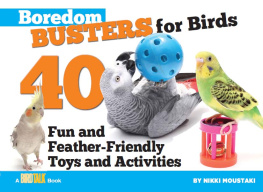

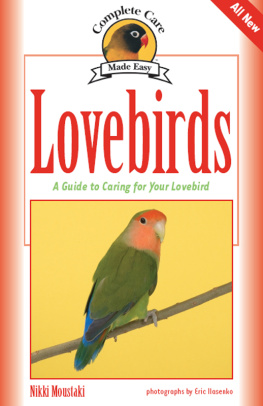
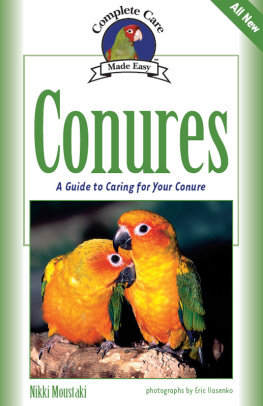

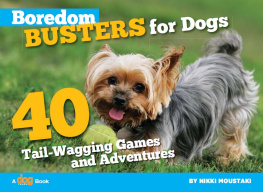



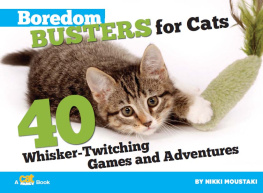
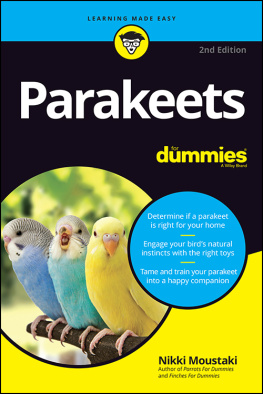
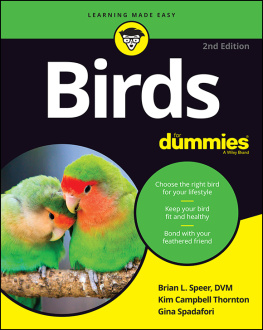
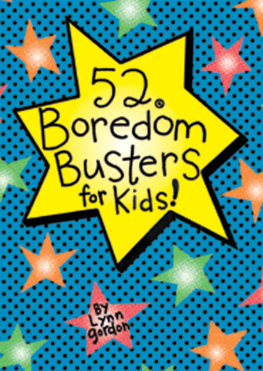
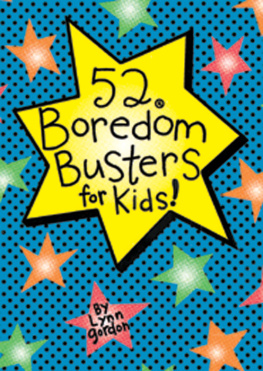





 Hands-on Play
Hands-on Play
